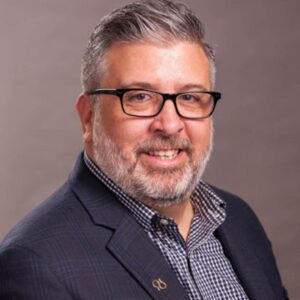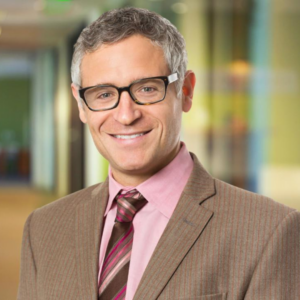Advanced dementia care is vital to quality of life, Part 2
Often people working with those with advanced dementia don’t see the importance of doing activities with them because they believe there is no point in keeping them active. This article is about how vital activities are to those with advanced dementia and how to obtain responses from them during groups and one-to-one sessions.
The goal of an activity should be to make a “connection” with residents who have dementia via touch, sound, visual stimulation, and appropriateness of the activity to enhance their personhood. Responses to look for would include opening of eyes, eye contact, facial expression, body or hand movement, improved alertness, and calming. Activities should be sensory stimulating and/or sensory calming depending on the resident’s need.
It is important to make sure that the activity is appropriate for the individual. For example, when using baby dolls in advanced dementia care, they should first be life-size and only be used with residents who would benefit from caring for this “baby.” At times you will see women who love to nurture a baby because they cared for their own children. They find comfort in holding and rocking a baby. The “baby” itself should not be looked upon as just a “doll,” but an important tool in providing comfort to the resident. I have been told that babies are often locked up in closets or cupboards because certain staff believes their use to be an unrealistic, “childish” activity. However, when I am training on advanced dementia, I always ask how many in the class lock their children up in cupboards! To our residents, these babies are real. I have seen many residents calm down while caring for a baby. Behaviors improved to the point that antipsychotic drug use was completely eliminated. However, staff and families need to be educated on why dolls are used and what the goal is for using them with particular residents. Keep in mind that dolls are not appropriate for all residents.
All activities should have a purpose and engage all five senses. Not many of us enjoy doing things that have no purpose and the same standard should be followed when working with our residents. Background history is important at this stage so that activities or interests that were of importance many years before can be brought forward and used again. One of the things I see in working with our elderly, both from staff and families, is that we make them dependent on us. I call this “acquired dependence.” We insist on doing everything for the resident instead of trying to let him or her do some things independently. By doing everything for them, we promote dependence and disability.
There are various types of activities that can be beneficial but first we need to look at where the resident functions the best.
One-to-one sessions can be held in the resident’s room or the dayroom—actually almost anywhere.
Small groups are comprised of two to three residents, but no more than four.
Large groups have more than four residents.
One-to-ones should be offered to those residents who spend more time in bed or who do not function well in a group setting. Many activities done on an individual basis can also be done in small groups. Using visual stimulation as seen in the multisensory environment (sensory videos, images from a projector on the wall or ceiling, or even the person directly working with the resident); tactile stimulation (stuffed animals, various fabrics, lotion massage); auditory stimulation (music listening, soothing voice of person working with them, nature sounds); kinesthetic (balloon toss, outdoor walks, simple exercises or range of motion), taste (Jell-o, ice cream, homemade bread, yogurt, fruit cups). When using taste it has been found that soft and sweet is much more appealing to people with advanced dementia. Multisensory environments work the best in one-to-one or small group settings. You will see increased eye movement, decreased behaviors, and increased alertness. Spiritual activities are also beneficial. Using prayer, bible pictures, scripture, and hymns may offer a great deal of solace to both the resident and their family members. Overall, each session throughout the day should offer a variety of sensory calming and sensory-enhancing activities.
Specialized programs, such as music and special events, are for larger groups. However, a resident should only attend if he or she can benefit and is not sleeping through the activity. Many people may listen to music with their eyes closed and are not really sleeping. A careful evaluation should be done to ensure that the program is suitable for each person involved.
Many encounters may last for 5 to 20 minutes and can be provided by any staff on the unit, families, or volunteers. Generally, 10- to 15-minute increments work the best for one-to-one sessions. Groups should never last 60 minutes because of decreased attention spans. In my experience I’ve found that 20- to 30-minute periods work the best. The multisensory environments should never be used as a “holding” place or a “babysitting” service because programs lose their effectiveness.
Each resident should be worked with multiple times during the day and not limited to just one or three times per week. The consistency of programming and connection with the advanced dementia resident is what provides true quality of life. Families can be asked to provide a short “life story” of their family member and when placed by the bedside of the resident, staff can interact and connect with that person on a more personalized level. Family members may think that we don’t talk to them when their dementia is so advanced, but we need to assure them that we do and that these life stories are important in providing quality of life and connection.
Activities offer a significant possibility to enhance the quality of life in persons with advanced dementia. We should never just “write them off,” but expect the best from each person. When we see eye contact, a head turning toward a sound, toes or fingers tapping to music, smiles and laughter, we have made a difference and we have provided true quality of life for the person in the final stages of the dementia process.
Diane Mockbee, BS, ADC, is certified by the National Certification Council of Activity Professionals and is President of the National Association of Activity Professionals (NAAP), with 1,400 members, as well as a member of the Arizona Association of Activity Professionals. She is employed by Palm Valley Rehabilitation and Care Center in Goodyear, Arizona, and is the Activity Consultant at Ridgecrest Healthcare Center in Phoenix. For more information, phone (623) 536-9911, ext. 212.
To send your comments to the author and editors, e-mail mockbee0508@iadvanceseniorcare.com.
Sidebar
Editor’s note: Part one of this series appeared in the Try This… department, April 2008, page 16.
Sidebar
The National Association of Activity Professionals (NAAP) was founded in 1982, and is the only national organization that exclusively represents Activity Professionals working primarily in geriatric settings. NAAP provides opportunities for professional development and personal growth through national and regional conferences that offer a variety of topics and numerous hours of education. NAAP has established partnerships with allied organizations, governing bodies, consumer groups, regulatory agencies, and provider groups. They continuously work toward uniform Standards of Practice for all Activity Professionals working with elders. For more information, contact the NAAP Office at (865)429-0717, e-mail thenaap@aol.com, or visit https://www.thenaap.com.
Related Articles
Topics: Alzheimer's/Dementia , Articles











